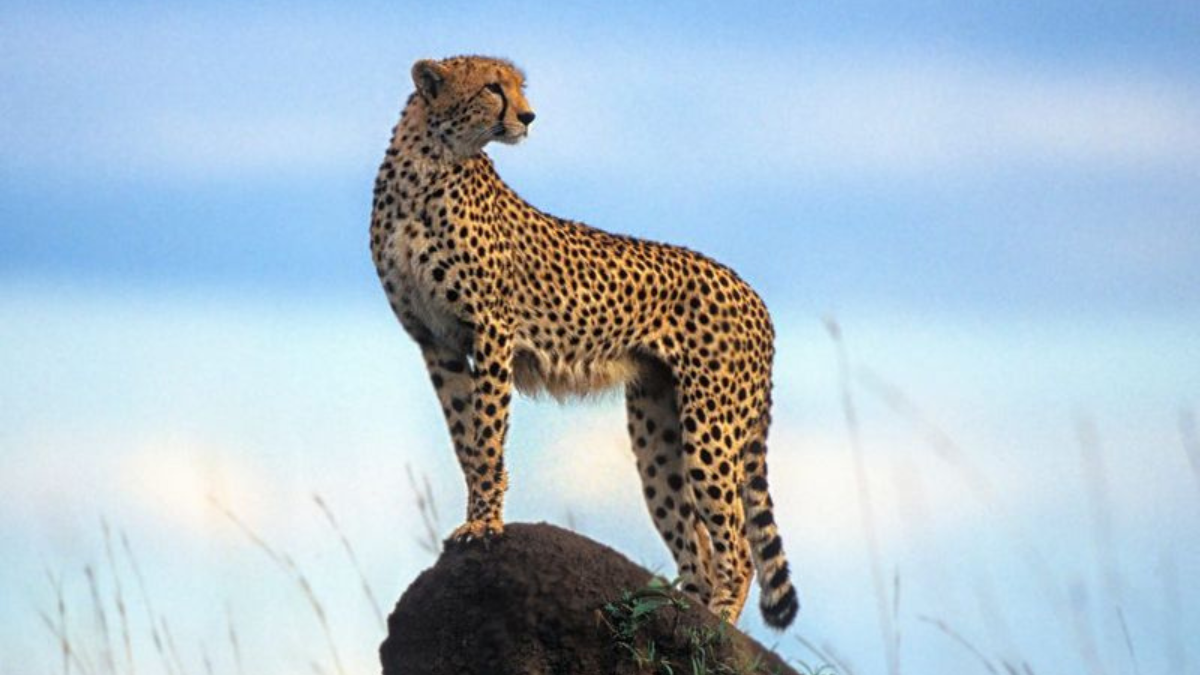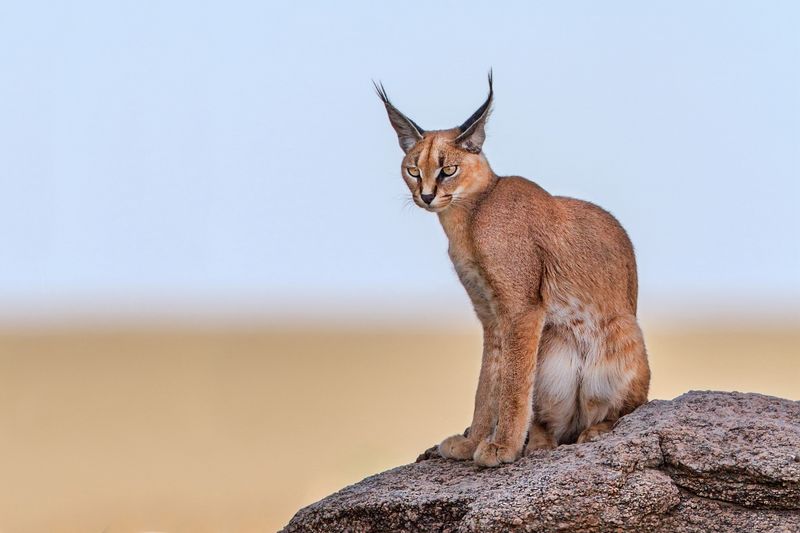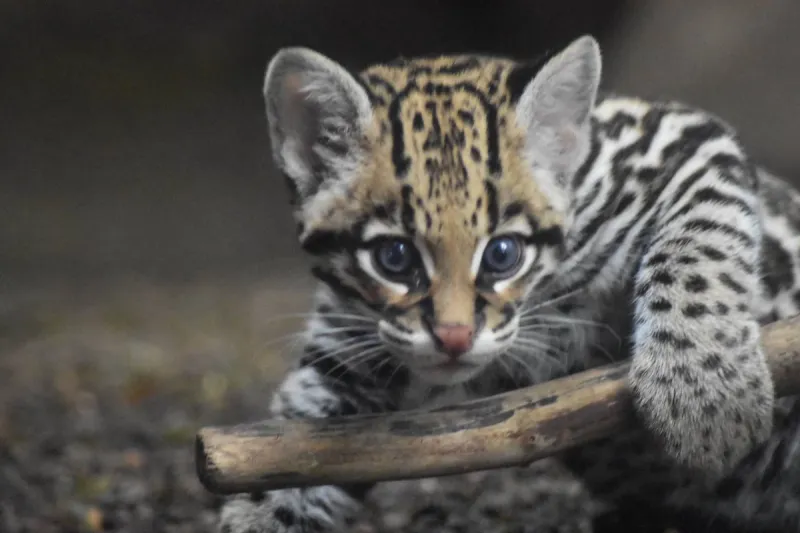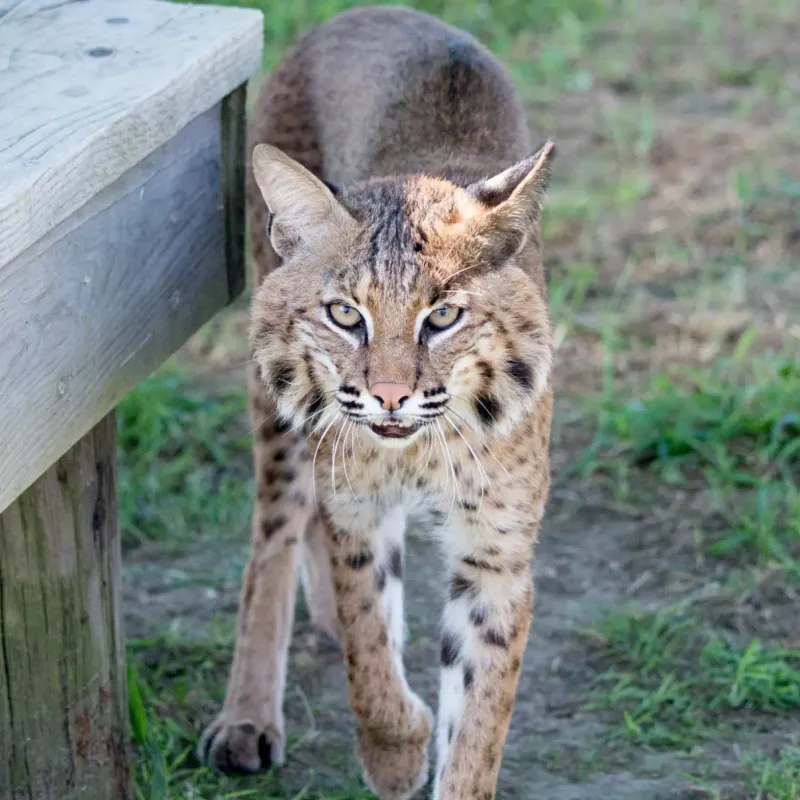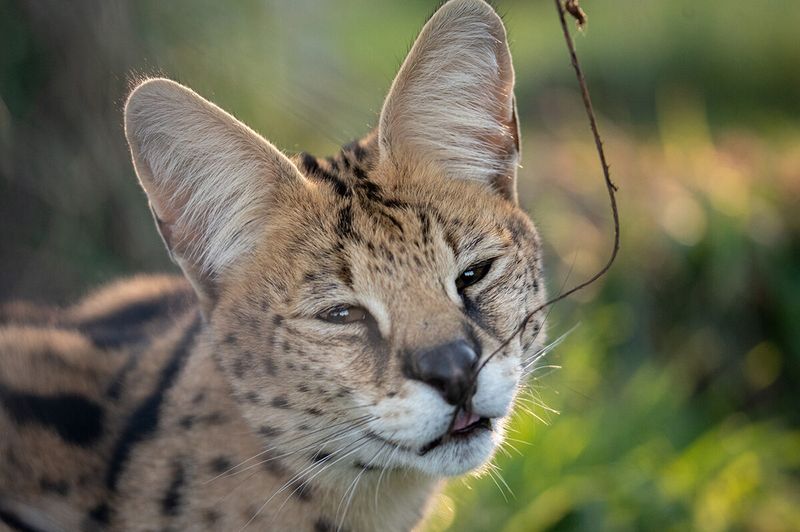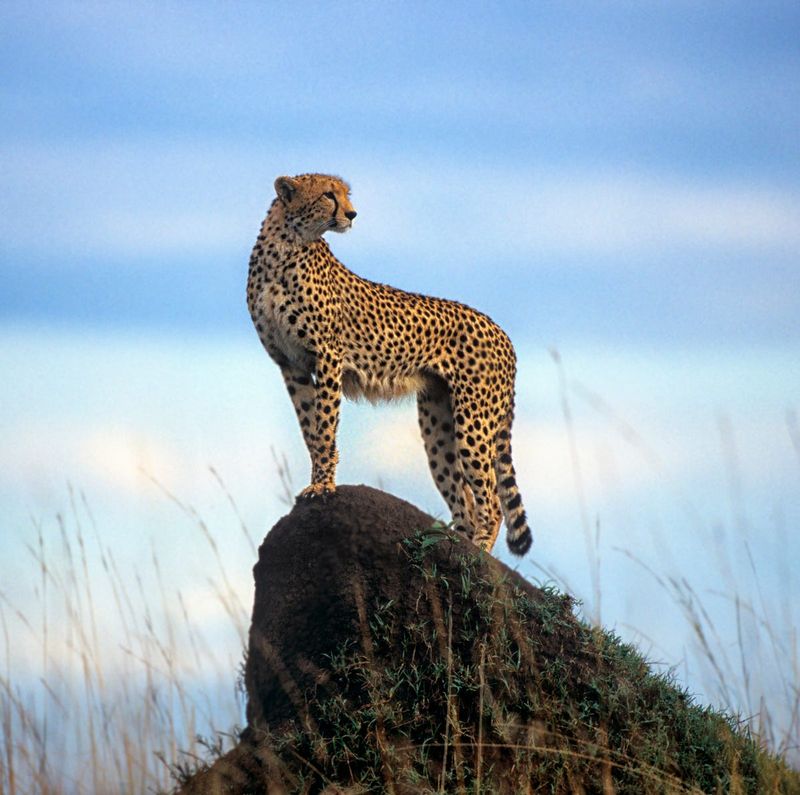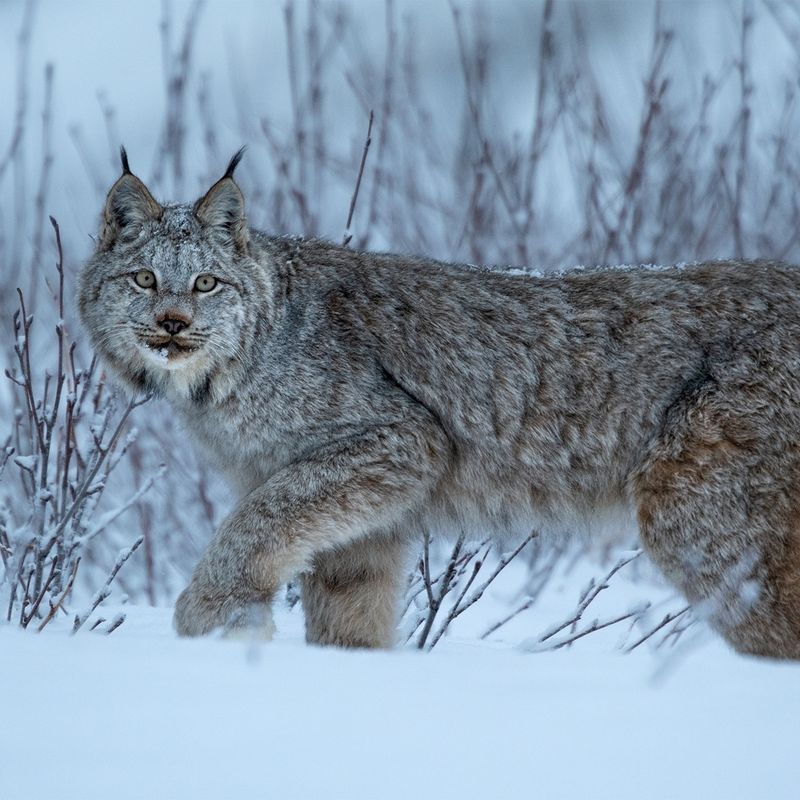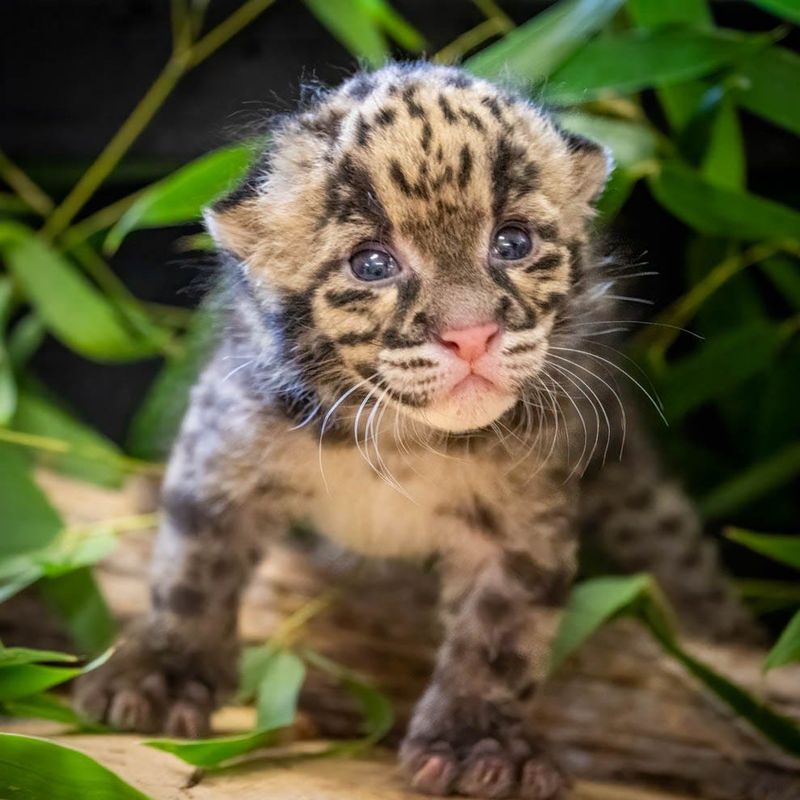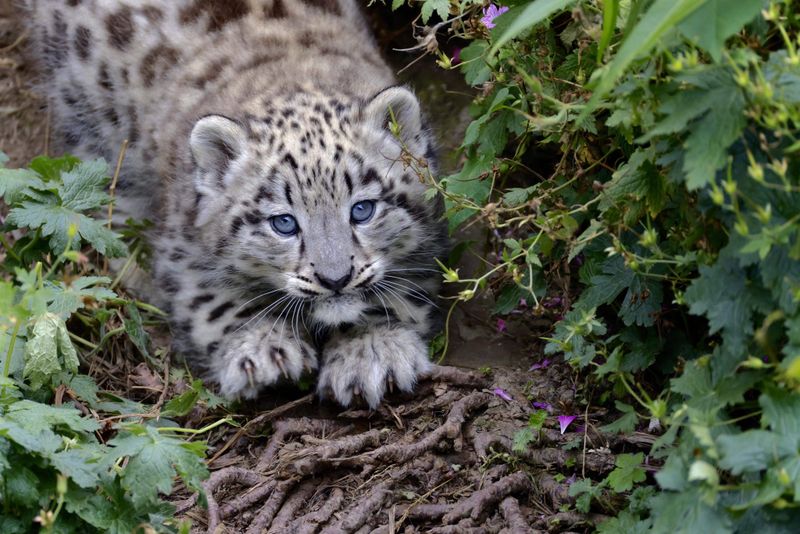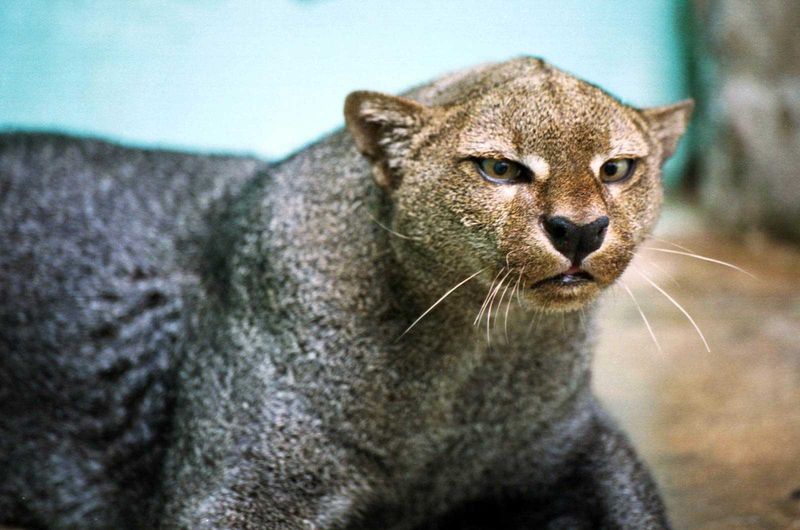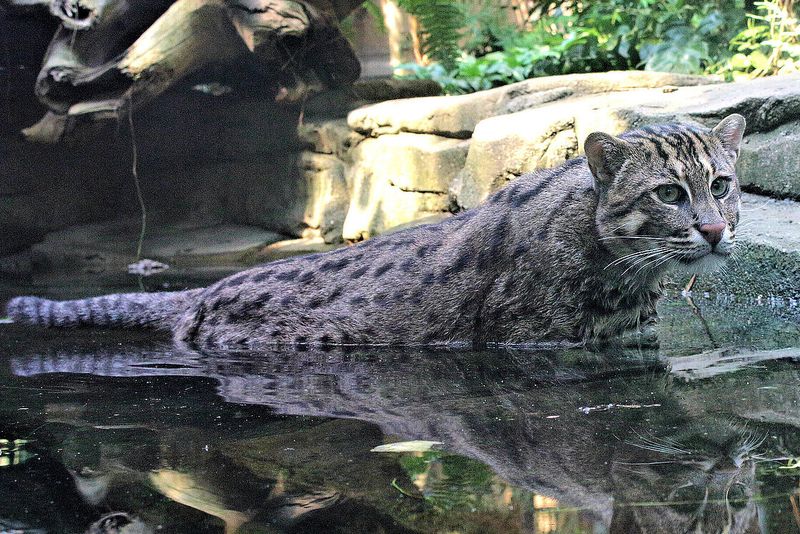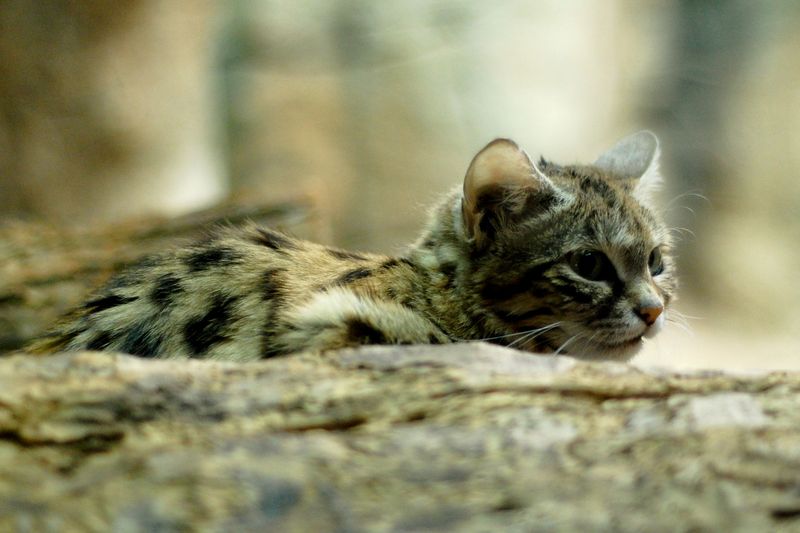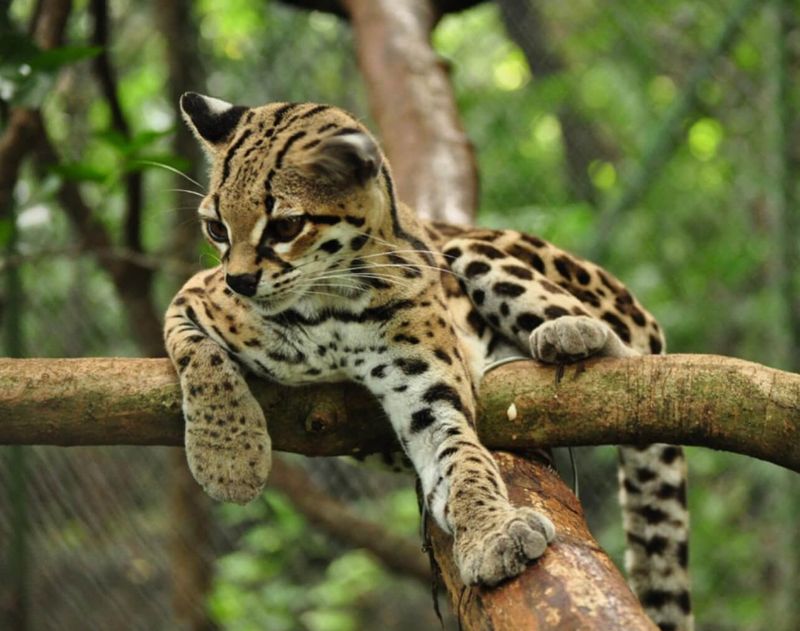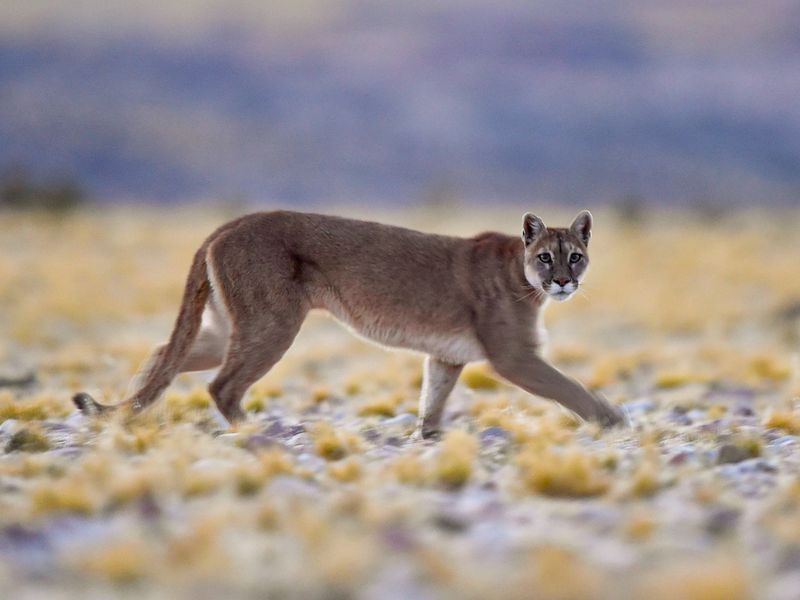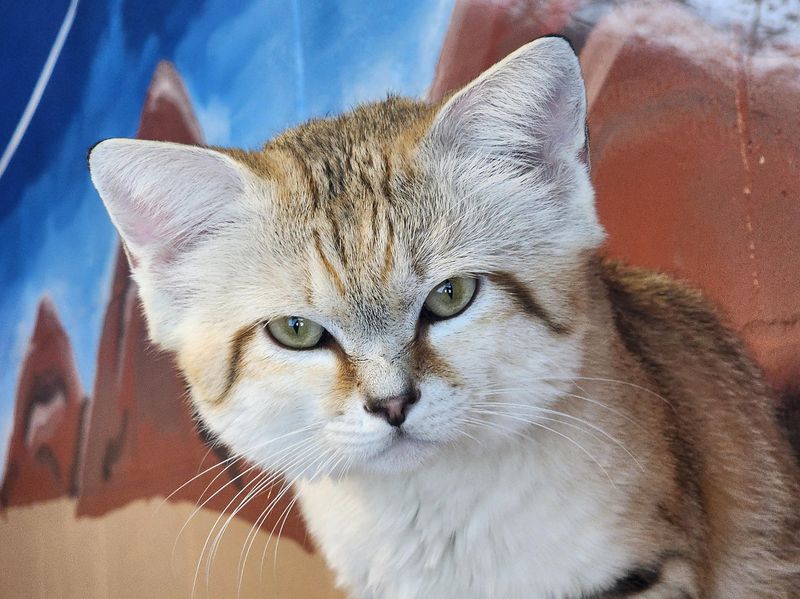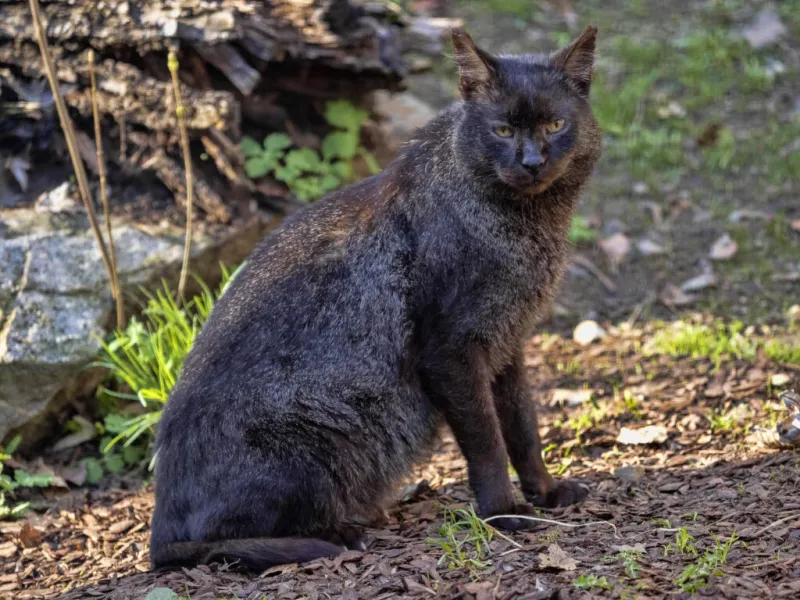📖 Table of Content:
Wild cats are often associated with mighty roars, but many species break this stereotype. Despite lacking the ability to roar, these non-roaring felines possess their own remarkable traits that make them equally fascinating. They showcase incredible strength, agility, and survival skills in the wild.
From the fastest land animal, the cheetah, to the stealthy, water-loving fishing cat, these creatures have evolved to thrive in various habitats. Their abilities are just as awe-inspiring as those of their roaring relatives. While their vocalizations may be quieter, their presence in the animal kingdom is anything but subtle.
Each of these cats has developed unique adaptations that help them hunt, defend territory, and navigate their environment. By diving into their lives, it becomes clear that roar or not, these felines are truly exceptional. Let’s explore the world of these silent hunters and appreciate their elegance and power.
1. Caracal
Known for their striking tufted ears, caracals are skilled hunters that can leap up to 10 feet to catch birds in flight. These agile cats inhabit African savannas and parts of the Middle East.
Caracals are solitary animals, relying on their keen sense of hearing and stealth to hunt. They are primarily nocturnal, which helps them avoid the heat and larger predators.
The caracal’s powerful build allows it to take down prey much larger than itself, showcasing its strength and adaptability. Though they can’t roar, their hiss and growl are equally intimidating.
2. Ocelot
Ocelots are small wild cats native to South and Central America, known for their beautifully patterned fur that provides excellent camouflage in the rainforest.
These nocturnal hunters are adept climbers, often using trees to spot prey or escape danger. Despite their small size, ocelots are fierce and can take down prey much larger than themselves.
Unlike big cats, ocelots do not roar, but they communicate through a variety of sounds such as meows, growls, and hisses. Their elusive nature and striking appearance make them a favorite among wildlife enthusiasts.
3. Bobcat
Across North America, bobcats are known for their flexibility as predators. With their unique short tails and ear tufts, they comfortably inhabit various ecosystems, including forests, deserts, and swamps.
These solitary animals are primarily nocturnal and highly territorial. They are skilled hunters, preying on rabbits, birds, and even deer.
Bobcats communicate with growls and hisses, as they lack the ability to roar. Their ability to adapt to a variety of environments makes them one of the most successful wild cats in terms of population.
4. Serval
A graceful, long-legged feline from Africa, the serval is known for its remarkable hearing. Its oversized ears help it pick up the slightest vibrations from prey hidden underground.
These cats are exceptional hunters, capable of leaping high to catch birds and small mammals. They prefer wetland areas where prey is abundant.
Servals communicate through a range of vocalizations, including purrs and hisses, rather than roars. Their unique appearance and hunting skills make them one of the most interesting non-roaring wild cats.
5. Cheetah
As the fastest land animal, the cheetah can accelerate to an astonishing 60 mph. Their slim build and long legs make them ideal for high-speed chases. They are commonly found in Africa, where open plains give them the space to run freely.
Despite their speed, cheetahs are vulnerable due to habitat loss and poaching. Conservation efforts are crucial to protect these magnificent creatures. Unlike other big cats, cheetahs cannot roar but communicate through a variety of vocalizations including purring and chirping.
The cheetah’s distinct black tear stripes help reduce glare from the sun, aiding their eyesight during high-speed chases.
6. Lynx
Lynxes are medium-sized wild cats found across parts of Europe, Asia, and North America. Their thick fur and large paws make them well-suited for cold climates.
These solitary hunters rely on stealth and patience, often ambushing prey such as hares and birds. Lynxes are known for their tufted ears and short, bobbed tails.
Despite their non-roaring nature, lynxes communicate using growls, hisses, and meows. Their adaptation to snowy environments and hunting prowess make them fascinating creatures of the wild.
7. Clouded Leopard
Found in the dense forests of Southeast Asia, clouded leopards are known for their elusive nature. Their beautiful cloud-shaped spots make them stand out, and their climbing abilities are unmatched. They can even descend trees headfirst with ease.
These solitary hunters are equipped with long canine teeth, reminiscent of saber-toothed cats. They prey on birds and mammals, using stealth and agility to capture their meals.
Clouded leopards communicate through growls and hisses. Their unique appearance and arboreal lifestyle make them a remarkable member of the non-roaring cat family.
8. Snow Leopard
Inhabitants of the high-altitude regions of Central and South Asia, snow leopards are equipped with thick fur and long tails to survive in harsh cold climates.
These solitary predators use their powerful legs to leap across rocky terrains, hunting mountain goats and sheep. Despite their size, they are incapable of roaring, instead communicating through growls and yowls.
Snow leopards are elusive and endangered, with conservation efforts crucial for their survival. Their ability to navigate harsh, high-altitude environments highlights their extraordinary adaptability.
9. Jaguarundi
Inhabiting Central and South America, the jaguarundi is a small wild cat with an unusual body shape, resembling a weasel with its elongated torso and short legs.
These cats are diurnal, often spotted hunting during the day. They prefer dense underbrush, where they use their agility to catch small prey such as rodents and birds.
Although jaguarundis cannot roar, they communicate through a series of whistles and chirps. Their unique appearance and behavior make them a fascinating study among non-roaring cats.
10. Fishing Cat
Fishing cats are adept swimmers found in the wetlands of South and Southeast Asia. They have partially webbed feet, aiding them in catching fish and other aquatic prey.
These nocturnal hunters are known for their patience, often waiting motionless by the water’s edge before striking. Unlike big cats, they do not roar but communicate through meows and growls.
Their wetland habitat is increasingly under threat, making conservation efforts essential to their survival. Fishing cats’ unique hunting skills and adaptation to aquatic life set them apart from other wild cats.
11. Black-footed Cat
Despite being one of the smallest wild cats, the black-footed cat from the deserts of southern Africa is a formidable hunter, boasting an impressive success rate.
These solitary nocturnal hunters rely on stealth and speed to catch rodents and birds. Their small size allows them to move quietly, avoiding larger predators.
Black-footed cats communicate through a series of purrs and growls. Their ability to thrive in harsh desert environments makes them remarkable members of the wild cat family.
12. Margay
In the rainforests of Central and South America, the small but agile margay can rotate its ankles, allowing it to climb down trees headfirst.
These nocturnal hunters are adept at navigating the dense forest canopy, preying on small mammals and birds. Unlike larger cats, margays cannot roar, communicating instead through meows and hisses.
Their arboreal lifestyle and unique climbing ability make them fascinating subjects for wildlife enthusiasts.
13. Andean Mountain Cat
The Andean mountain cat is a rare and elusive feline inhabiting the high-altitude regions of the Andes in South America. Its thick fur and bushy tail help it survive in cold, rugged terrains.
These solitary hunters prey on small mammals and birds, using their agility to navigate rocky landscapes. Despite their small size, they are capable predators.
Andean mountain cats communicate through growls and hisses. Their adaptation to extreme environments and elusive nature make them a mysterious and intriguing species of wild cat.
14. Sand Cat
Perfectly suited to desert environments, sand cats from North Africa and Asia have thick fur to protect them from the harsh temperatures and hunt at night.
These small cats have large ears, aiding in detecting prey underground. They prey on rodents, birds, and insects, often burying themselves in the sand during the day to stay cool.
Sand cats communicate through meows, growls, and purrs. Their ability to thrive in harsh desert environments makes them one of the most resilient non-roaring wild cats.
15. Jungle Cat
Jungle cats are medium-sized wild cats found in the wetlands and grasslands of South Asia and the Middle East. Their long legs and agile bodies make them excellent hunters.
These cats are primarily nocturnal, preying on birds, rodents, and reptiles. Although they cannot roar, jungle cats communicate through a range of vocalizations including meows and growls.
Their adaptability to a wide range of habitats and distinct appearance make them a notable member of the non-roaring cat family.
